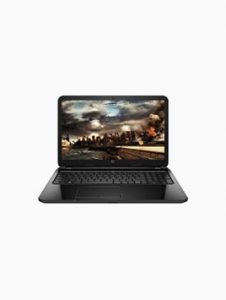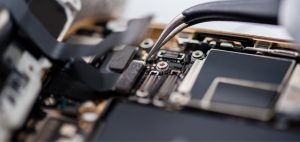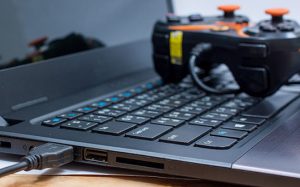We often ask this question ourselves when a need for a new computer comes by. 
We, as a technicians servicing computers for many years will offer you some helpful
tips and recommendations for this uneasy choice.
First of all, you should adhere to several precautions. Don’t pick computers based in their location
of manufacturing or assembly. For many years now all of laptop and computer assembly has been
mainly concentrated in the Asian region. You also shouldn’t pay too much attention to the brand
names unless of course you’re a fan of one favorite company.
In addition most consumers don’t know that up to 80% of products from big brand names including HP/Compaq, Apple, Dell, Lenovo and others are manufactured by only 4-5 Asian companies. The same, for example, applies to smart phones. That’s why you can conclude that the quality of the laptops or any other portable technology in the industry is relatively the same everywhere. The only differences are in prices and design, but of course all rules have their exceptions.
 To get back to the original question, how would you go about buying the best laptop for yourself?
To get back to the original question, how would you go about buying the best laptop for yourself?
First of all, you need to determine what use will you have for your computer, be it purely in business or help with education, for example. Maybe you want to use the laptop as a multimedia or a gaming center. Or you need it to solve scientific problems or use it for design.
Once you’ve decided the uses of the computer, you have to also determine it’s relative configuration:
such as for example RAM size, processor speed, discrete or integrated graphics. The size of the hard drive (SSD) is also important and availability of outside interfaces – that is, ability to connect to other devices, as for example a video-camera.
Considering all the needs, you need to determine the maximum amount of money that you’re willing to spend on the new purchase.
Next, it is necessary to determine the category computer. I’ll explain what that is.
 Practically all large manufacturers of computer technology divide their production into two classes.
Practically all large manufacturers of computer technology divide their production into two classes.
First is technology meant for use in mid-, large-sized business and the second is meant for use at home or small business.
The difference between these two classes is quite large, ranging from tech support, guarantee service,
and many other differences, including even the appearance of the computer. That is why it is important to decide beforehand
what category you need.
The biggest difference is in tech support, which will be explained below.
Laptops and computers that are meant for home use usually come with less documentation and media with essential programs. The warranty usually is one year, and it is also very important to know that the warranty repairs are handled in service centers (depot) of the manufacturer!
To explain, if you have problems with your laptop – you’ll have to either mail it or deliver it to the service center yourself. Add the time of delivery to the time of repairs, and you can expect to wait up to 1-4 weeks for your laptop back.
In case of the business class computers – in most cases you receive 2-3 years of warranty, and repair of your laptop right on your business or at home the next business day after the call to the service center. But this isn’t all. Warranties can be either local or international.
This is important to know when purchasing, especially if you permanently live in another country or you travel frequently and you’re on lengthy business trips. Practically all customers ask about the warranty length, but seldom does someone inquire about it’s regions of service or how it works.
Next, a few words about the design of laptops. Business models usually have a poor choice in coloring, and have a more strict design, but their construction is more durable, which is very important for mobile users.
 Many manufacturers such as Dell, Apple, and Lenovo makes the laptop cases out of light metal alloys, and some keyboards are made spill-proof.
Many manufacturers such as Dell, Apple, and Lenovo makes the laptop cases out of light metal alloys, and some keyboards are made spill-proof.
Laptop models for home and small business on the other hand most often are made with rich coloring in design, large screens and advanced multimedia capabilities. You can even find models with two hard drives (SSD) and a remote. But you need to keep in mind that these models weigh more, have less battery life, and some laptops are even meant to replace desktops – they don’t have any batteries.
Taking into consideration all of the above, when making your choice it is important to find the lowest common denominator of the most important category.
It is easiest to determine the parameters of the laptop through a web-site of the manufacturer. The category if a laptop is most often determined through it’s brand name. So for example, home and small business computers made by Dell usually carry brand names of Inspiron and Latitude, HP/Compaq – Pavilion and HP Compaq n-series, Acer – Aspire and Travelmate, and Lenovo are 3000 series and Thinkpad, respectively.
Some important advice on how should you prepare to call the service center if your laptop isn’t functioning properly.
First of all, prepare some important data about your computer – it’s brand name, model and model number, and also the serial or service number.
Next, write down a short overview of the problem and how did the problem occur. When you’ve called the service center, write down the name of the service representative – this’ll be useful later.
Make sure to correctly give your address and contact numbers – don’t be shy to double-check that. If your repair service is due the next day, make sure to give your realistic location for the next day, not the company address in case they’ll be different.
And of course it is very important to properly use and take care of your laptop, but that is a for another article.


